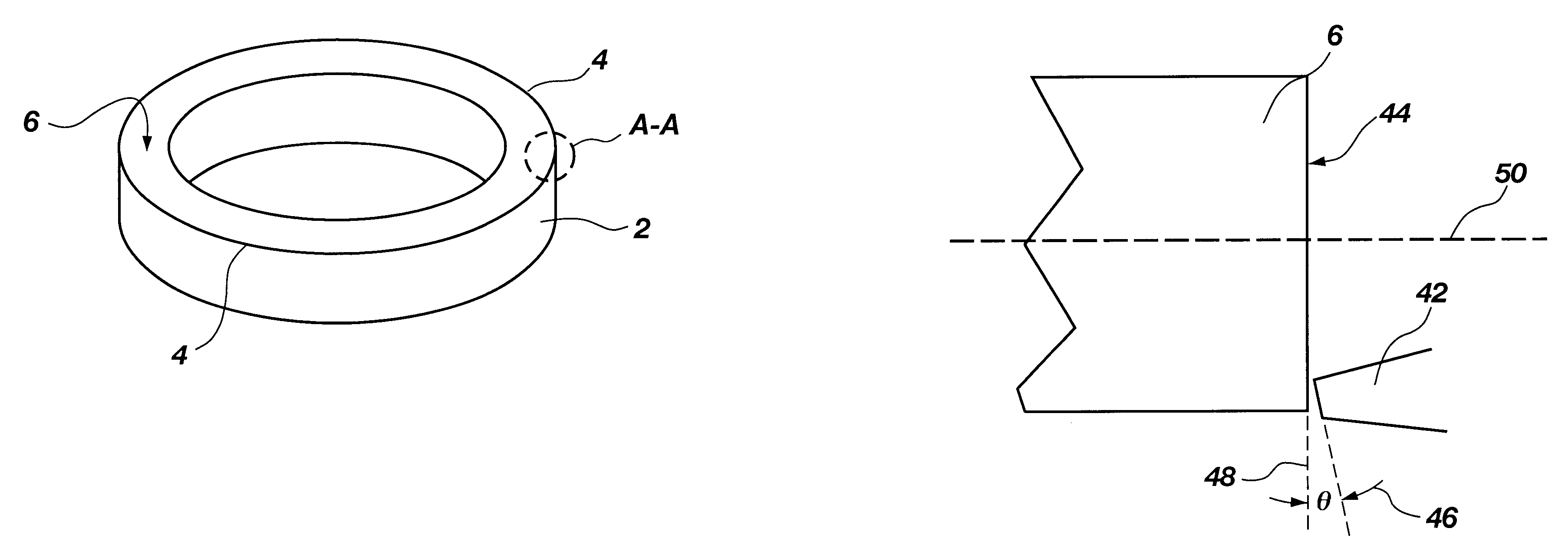Method for manufacturing an improved seal for fluid applications
a technology for fluid applications and manufacturing methods, applied in the direction of manufacturing tools, turning machine accessories, portability lathes, etc., can solve the problems of sealing failure, high cost, and high cost, and achieve the effect of better withstand
- Summary
- Abstract
- Description
- Claims
- Application Information
AI Technical Summary
Benefits of technology
Problems solved by technology
Method used
Image
Examples
Embodiment Construction
Reference will now be made to the invention in which the various elements of the present invention will be given numerical designations and in which the invention will be discussed so as to enable one skilled in the art to make and use the invention. It is to be understood that the following description is only exemplary of the principles of the present invention, and should not be viewed as narrowing the claims which follow.
The presently preferred embodiment of the present invention comprises utilizing a turning process to manufacture a mechanical seal from cemented tungsten carbide. As explained previously, a sintered blank is often preferred as the material for a mechanical seal because of its hardness. Furthermore, those skilled in the art of using cemented tungsten carbide for mechanical seals grind them. This is because of a mind set which is common among those in the industry.
Specifically, carbide is generally not considered "turnable" on a lathe because it is known that carb...
PUM
| Property | Measurement | Unit |
|---|---|---|
| Angle | aaaaa | aaaaa |
| Angle | aaaaa | aaaaa |
| Angle | aaaaa | aaaaa |
Abstract
Description
Claims
Application Information
 Login to View More
Login to View More - R&D
- Intellectual Property
- Life Sciences
- Materials
- Tech Scout
- Unparalleled Data Quality
- Higher Quality Content
- 60% Fewer Hallucinations
Browse by: Latest US Patents, China's latest patents, Technical Efficacy Thesaurus, Application Domain, Technology Topic, Popular Technical Reports.
© 2025 PatSnap. All rights reserved.Legal|Privacy policy|Modern Slavery Act Transparency Statement|Sitemap|About US| Contact US: help@patsnap.com



